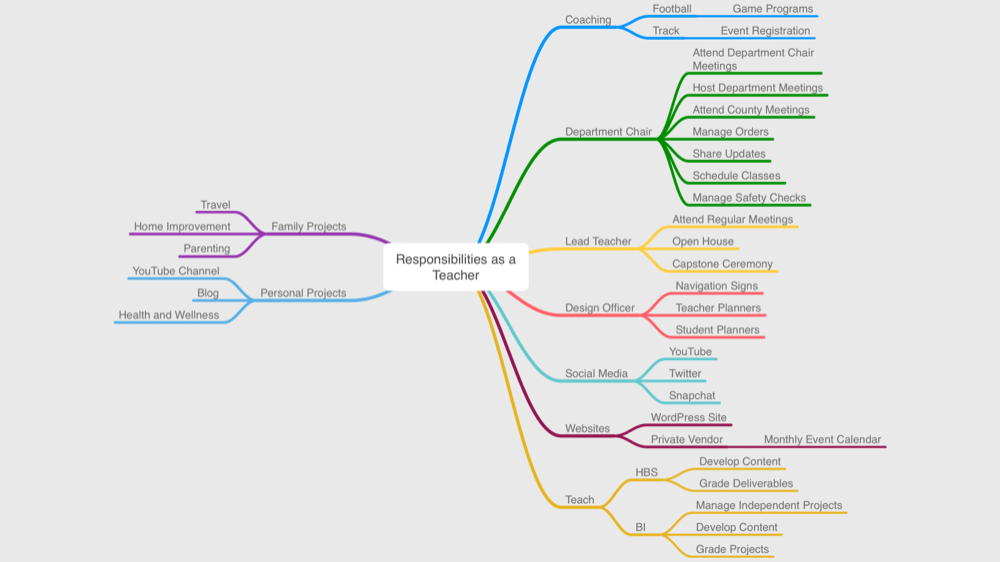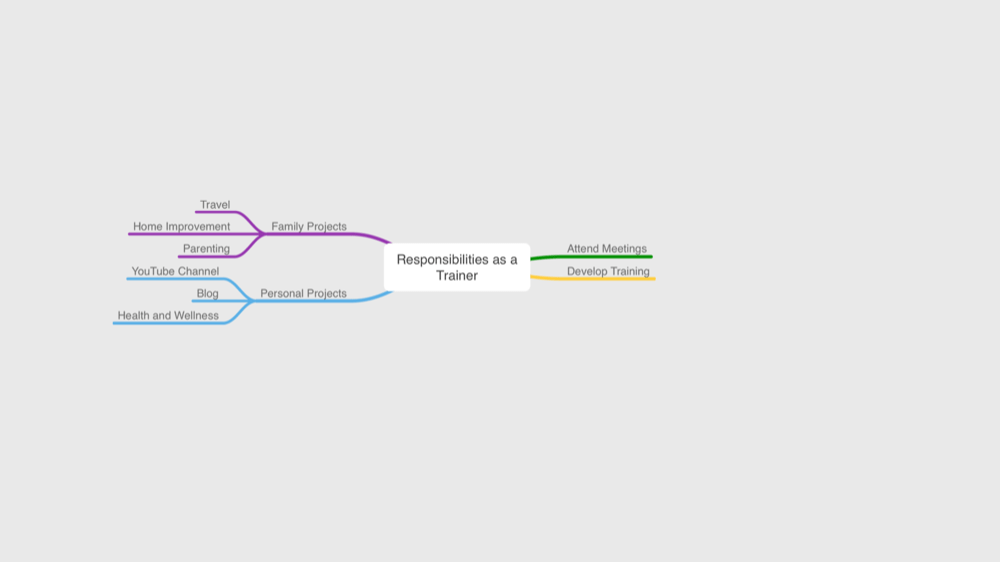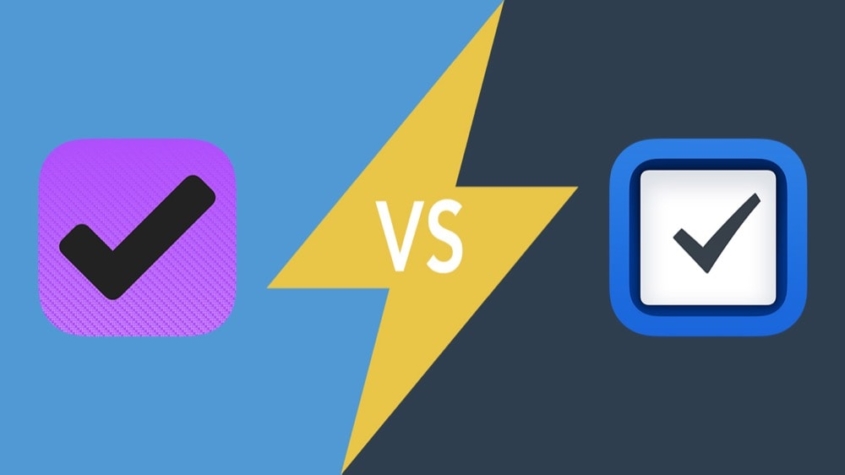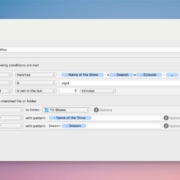OmniFocus vs Things
One of my favorite ways to procrastinate is to change my task manager. It’s fun and feels super productive, but it’s a trap. An equally fun and falsely productive pass time is debating with strangers on the internet about task management apps.
This post is not a salvo in that war, just the documentation of a decision I made for my specific circumstances. I am a huge fan of both OmniFocus and Things; they are both excellent apps. However, I recently switched over from OmniFocus to Things, and I wrote this post to organize my thoughts. Hopefully, it helps you too.
Complexity
For a LearnOmniFocus session I gave, I mapped out the complexity of my areas of responsibility as a public high school teacher and as a corporate trainer. I may have missed something, but in broad strokes, they are accurate.


OmniFocus
As a teacher, I needed OmniFocus to deal with the extraordinary complexity of my day-to-day work experience. From leading a meeting of a committee, to working on dedicated department chair tasks, to supervising a fetal pig necropsy, at any point in my day, there was a distinct group of tasks for me to work on that would likely be different in 30 minutes.
These focus shifts meant I relied heavily on custom perspectives driven by metadata, availability, dates, and folder structure. I would take the time at the end of the day to make sure new action items had the required information, and then I would go through the next day taking care of whatever OmniFocus told me I needed to do. OmniFocus wasn’t just a list of stuff to do; I used OmniFocus as a manager who would tell me what to do and when.
Things
In contrast, Things gives me a list of action items to take care of on a specific day. While it can do some filtering based on tags and dates, it’s just not as native of a part of the app as OmniFocus. This is fine, because, as a trainer, my day has much more freedom to create and work on tasks as I choose to instead of being dictated by a calendar event or specific situation. In my current working-from-home setup, I don’t even have a need to split tasks by location.
I don’t want it to sound like Things can’t handle complexity, quite the contrary, I have many projects in Things with headers, action items, sub-tasks, notes, etc. Things’ ability to handle this completely is why I use it instead of Reminders.app or a list in Drafts. However, my current level of task complexity is well met by Things.
- High Task Complexity= OmniFocus
- Every level of action item can have notes, defer dates, etc
- Every level can have an active status
- Projects can be sequential, parallel, or single action lists.
- Projects can be nested in folders of many depths
- Low Task Complexity= Things
- Projects availability is based on dates
- Checklist items can’t have notes, dates, tags, etc
Automation
By vaguely waving my hand around in the direction of my website or YouTube channel, you can tell that I am a huge fan of automation. Automation capability is one of the biggest requirements for any new tool to join my toolbox, so I have a high standard when measuring a tool’s automateability.
OmniFocus
I have experimented with scripts from blog posts dated from before the iPhone, and they still work. I would not be surprised if OmniFocus could import tasks from the Rosetta Stone. There are years and years of automators’ experiments with OmniFocus documented online and with the development of OmniAutomation, even more is on the way. Whether it is an ancient AppleScript, a shiny new OmniAutomation, or an integration with a third-party app, OmniFocus does not want for automation options.
This automation power was a huge help for me as a teacher. From processing my email inbox, to tracking my grading, and templating projects, OmniFocus could handle it all, and the robust history of other people doing similar work allowed me to learn from them and build my own workflows.
Things
Similar to the complexity comparison, automation in Things is functional but less robust than OmniFocus. There are Drafts actions for getting action items into Things, but there are only a few, and most of them are modified versions of actions originally created for OmniFocus.
There are a few great options created specifically for Things, such as Things Parser 3 for Drafts, but for the most part, you are going to be in the modification game.
There is also Apple Script and Shortcuts support, but they feel like limited implementations not designed to do heavy lifting without dedicated prep work on the user’s side.
That being said, there is the very helpful Things 3 Link Builder for creating URL Schemes to automate Things.
- High Automation Complexity= OmniFocus
- OmniAutomation
- Tons of robust Apple Scripts
- Lots of Third Party Integrations
- Low Automation Complexity= Things
- Limited Versions of what’s available for OmniFocus
- URL Scheme Builder
Adoption
Every fall, when a new version of iOS releases, there is some quantity of new system features. Things like Scribble or Widgets. I always anxiously await my third-party apps to implement these new features and am quick to download the updates.
OmniFocus
With OmniFocus, this waiting always seems like a marathon. Support for new iOS features is probably going to come, but might not happen for weeks or months.
To be fair, I believe this is an example of OmniFocus waiting to “get it right” and be deliberate about their app, but for a user, that wait can be frustrating.
Things
Things tends to adopt new Apple technologies faster, but still at a high level. I don’t know if the developers have some advantage, or if they are just being reckless, but Things seems to get features very quickly
This isn’t a deal breaker for OmniFocus, but a nice benefit of using Things.
Conclusion
At this point in my life, I decided to switch from OmniFocus to Things because I don’t need the complexity of OmniFocus to slice and dice my tasks over different contexts throughout the day. With less of a need for metadata-driven contexts, I don’t have to spend as much time maintaining my system as I did before.
In the end, I could have built a new, simpler system in OmniFocus, but I decided to use the switch to Things as an opportunity to rethink my productivity systems and build a system that works for my new life.
I believe a career change is an ideal time to reevaluate the tools you use, but avoid the trap of constantly switching to the shiny new toy and never getting anything done.
I trust and would wholeheartedly recommend either app to the right person. OmniFocus and Things are real lifelines to help organize and maintain a life for those of us who need them.












Omni over promises, takes forever and then sometimes doesn’t deliver on big promises. For example, Omni announced in their annual update the integration of OmniFocus with OmniPlan, but it didn’t happen, and didn’t happen, and eventually the concept just went away.
Agreed Peter, that OmniPlan integration with OmniFocus would have been interesting enough for me to buy OmniPlan. Perhaps attributing their development speed to a methodical approach is a bit charitable.
I will say when they deliver, the product is rock solid. It’s the delivering that is the problem.